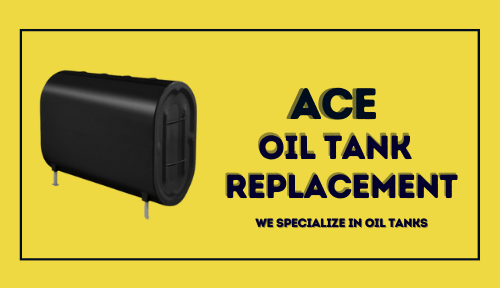The 7-Step Checklist to Smooth Oil Tank Replacement
Introduction
Replacing your heating oil tank is an important investment for homeowners who rely on oil for heating. An old or failing tank can cause leaks, corrosion, and inefficiencies that not only harm the environment but also result in higher heating costs. By following a simple checklist, you can ensure that your oil tank replacement is efficient, cost-effective, and hassle-free. This guide walks you through the seven essential steps to make sure the replacement process goes smoothly from start to finish.
Step 1: Assess Your Current Oil Tank
Before making any decisions about replacing your oil tank, it's important to assess its current condition. Regular maintenance and inspections can help you identify potential issues early on.
Look for signs such as:
- Rust or corrosion on the tank’s exterior
- Leaks or dampness around the tank’s base
- Poor performance or inconsistent heating
If your tank is over 20 years old or shows signs of serious damage, it’s time to consider replacing it. Assessing your tank’s condition helps prevent emergency replacements and gives you time to budget accordingly.
Get a free quote
Roth oil tank pg
Step 2: Select the Right Type of Oil Tank
When it comes to replacing your heating oil tank, there are two main types to choose from: above-ground and underground tanks. Both options serve the same purpose, but they differ in terms of installation costs, lifespan, and ease of maintenance.
- Above-ground tanks are typically more affordable and easier to install. They are easier to inspect and maintain, but they may be less aesthetically pleasing if located in visible areas.
- Underground tanks are ideal for homeowners who want to maintain a tidy yard or have limited space. However, they tend to cost more to install due to excavation requirements and are harder to maintain.
When selecting a tank, consider your budget, available space, and the local regulations that may impact installation.
Step 3: Research and Hire a Professional Oil Tank Replacement Company
The quality of the company you hire for oil tank replacement can greatly impact the overall success of the project. To find the right professional, consider the following:
- Reputation: Look for a company with positive reviews and a proven track record of completing oil tank replacements.
- Experience: Choose a service provider with experience in replacing both above-ground and underground tanks.
- Licensing and Insurance: Ensure the company is fully licensed and insured, protecting you in case of accidents or damage during installation.
- Warranty: A reputable company will offer warranties on both the tank and installation, giving you peace of mind for years to come.
At Ace Oil Tank Replacement, we specialize in efficient, professional oil tank replacement. Our team ensures that the job is done right, offering a transparent, stress-free process from start to finish.
Step 4: Schedule the Tank Replacement at the Right Time
The timing of your oil tank replacement can significantly affect the cost and ease of the process. Replacing your tank during peak heating seasons, like late fall or winter, often results in higher prices and longer wait times. Scheduling your replacement in the off-season, such as spring or summer, can help you take advantage of lower rates and increased availability.
Additionally, scheduling the replacement in advance allows you to plan for any necessary home improvements, such as landscaping or clearing the installation area.
Step 5: Prepare Your Property for the Oil Tank Installation
Before the replacement team arrives, it’s essential to prepare your property. Ensure there is clear access to the area around the tank.
This includes:
- Moving any obstacles or debris that could block access
- Ensuring the driveway is clear for any necessary equipment
- Preparing the area around an underground tank for excavation
Proper preparation makes the installation process more efficient, minimizing disruptions to your home.
Step 6: Understand the Cost Breakdown and Get a Detailed Quote
Cost transparency is vital when replacing an oil tank. The total cost will depend on factors such as the size of the tank, type (above-ground vs. underground), labor, permits, and disposal fees for the old tank. Make sure to request a detailed quote that breaks down each element of the price.
This should include:
- Tank price (based on material and size)
- Labor and installation fees
- Additional costs like disposal, permits, and inspections
At Ace Oil Tank Replacement, we provide detailed, upfront quotes to ensure no surprises and allow you to plan effectively.
Step 7: Post-Installation Inspection and Maintenance
Once your new oil tank is installed, it’s important to schedule a post-installation inspection. This ensures that the tank is operating as expected and that all connections are secure. Regular maintenance will extend the life of your tank and reduce the chances of a future failure.
Some key maintenance tasks include:
- Annual inspections for leaks or rust
- Cleaning and replacing filters as needed
- Monitoring oil levels and checking for signs of deterioration
By scheduling regular maintenance, you can avoid costly repairs and ensure that your new tank functions efficiently for years.
Conclusion
Following this 7-step checklist ensures that your
oil tank replacement is smooth, cost-effective, and hassle-free. From assessing your current tank to understanding the costs involved, each step is crucial for a successful replacement.
Ace Oil Tank Replacement is here to guide you through every part of the process with professionalism and expertise. To schedule your consultation or learn more, visit Ace Oil Tank Replacement or call
413-241-6720.

